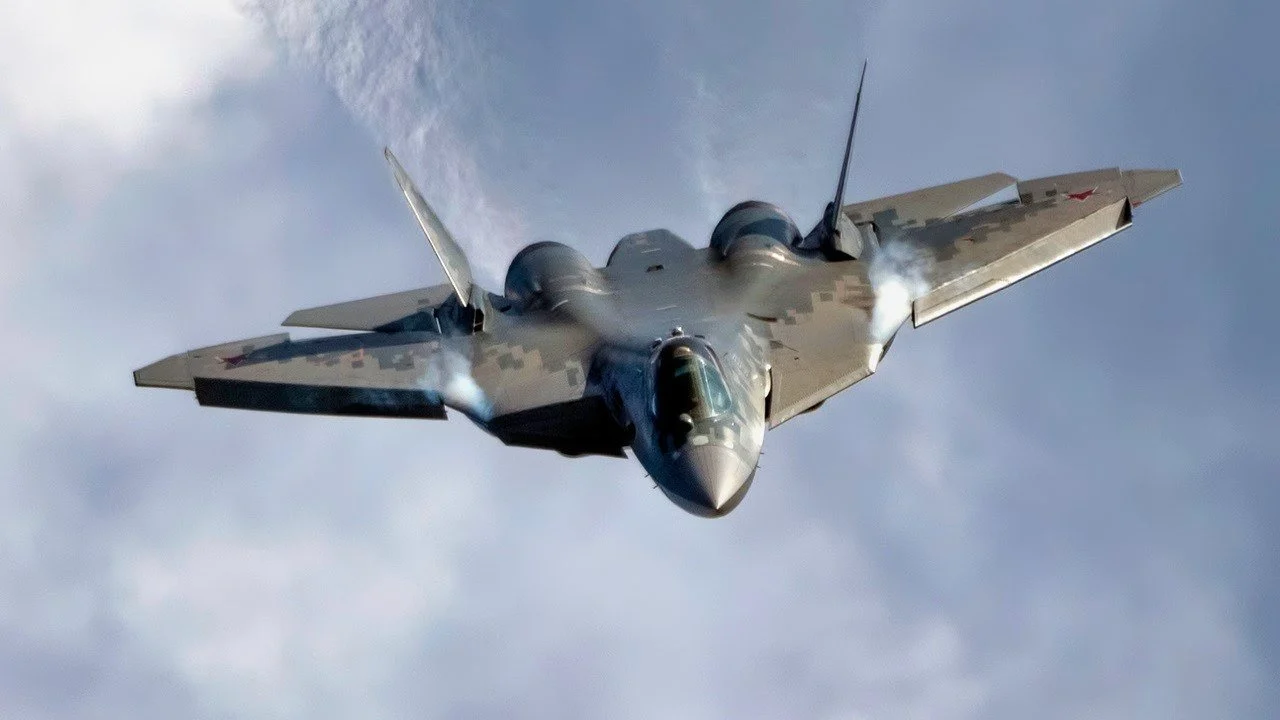In a strategic rebuff to Washington, India has formally declined the U.S. offer to procure the F-35 stealth fighter jet—strongly signalling that the Russian-built Su-57E may emerge as New Delhi’s preferred fifth-generation combat aircraft to counter China and Pakistan’s expanding aerial arsenal.
This stunning pivot in India’s airpower trajectory signals a shift in New Delhi’s defence priorities, moving away from Western systems with restricted integration options and towards platforms that empower indigenous weapon system development under its “Atmanirbhar Bharat” (self-reliant India) initiative.
The move comes months after U.S. President Donald Trump personally extended the F-35 offer during Prime Minister Narendra Modi’s visit to the White House in February, positioning the American fighter as the cornerstone of future Indo-U.S. air cooperation.
But Indian officials have made it clear that New Delhi is uninterested in acquiring what they view as “off-the-shelf” platforms, preferring instead strategic partnerships centered around localised defence manufacturing and complete system autonomy.
According to Bloomberg, the Indian government has conveyed that it will not retaliate against the recent U.S. imposition of a 25% tariff on Indian imports with countermeasures—but will instead seek to improve trade ties by increasing purchases of U.S. commodities like liquefied natural gas, telecoms equipment, and gold.
Defence equipment, however, is pointedly absent from that list—underscoring New Delhi’s calculated decision to restrict military acquisitions from Washington amid concerns over operational limitations, escalating procurement costs, and geopolitical strings.
The rejection of the F-35 comes as India evaluates the strategic calculus of embracing Russia’s offer for the Su-57E—an export version of its premier stealth fighter aircraft, which boasts not only fifth-generation performance but also a level of integration flexibility unmatched by Western counterparts.
 |
| Lockheed Martin's F-35 fighter jet is displayed during the International Bali Airshow at Ngurah Rai International Airport in Kuta, Bali, Indonesia. (File Image/Reuters) |
Russia’s unprecedented proposal to provide full source code access to India has been described by regional analysts as “strategically disruptive,” offering New Delhi the ability to seamlessly integrate its homegrown missiles, electronic warfare systems, and mission computers into the platform.
Such access is considered a holy grail in global defence transactions—an offer the U.S. has never extended for the F-35, nor has France with the Rafale.
A senior Indian defence official acknowledged, “The refusal of France to share critical system source codes remains a sore point for Indian defence planners, especially as they seek to operationalise indigenous weapons systems across platforms.”
Dassault Aviation, the manufacturer of the Rafale, has long withheld access to critical subsystems like the Thales RBE2 AESA radar and Modular Mission Computer, citing intellectual property and international export controls—thereby limiting India’s ability to tailor the aircraft to evolving battlefield demands.
India’s €7.8 billion (RM37.5 billion / USD 8.4 billion) acquisition of 36 Rafales in 2016 was completed by December 2022, with deployments to Ambala and Hasimara airbases near Pakistan and China, respectively.
In April 2025, India signed another contract with France for 26 Rafale M carrier-based variants for deployment aboard INS Vikrant and INS Vishal, with deliveries expected between 2028 and 2030.
Yet the lack of full source code access has triggered renewed debates about India’s long-term strategic autonomy and its ability to adapt foreign aircraft to Indian-developed systems like the Astra Mk2 BVR missile or the Smart Anti-Airfield Weapon (SAAW).

In stark contrast, Russia’s Su-57E package not only includes stealth and super-manoeuvrability features but also the ability to incorporate technologies aligned with India’s Super-30 upgrade programme—furthering the IAF’s push towards 4.5++ and fifth-generation integration across its combat fleet.
The Su-57E variant on offer includes a Gallium Nitride (GaN)-based AESA radar, Indian-designed mission computers, and the possibility of co-developing advanced avionics and weapons suites with Indian defence firms like HAL and DRDO.
India currently operates more than 270 Su-30MKI air superiority fighters—the backbone of its combat fleet—co-produced with Russia and now undergoing deep upgrades under the Super Sukhoi initiative to enhance radar, EW, and long-range strike capabilities.
Upgrades include a glass cockpit, DRDO-designed mission computers, AESA radar, and integration of Indian weapons like the Astra Mk1/2 and Rudram anti-radiation missiles, along with Russian stand-off weapons such as the BrahMos-A and R-77-1.
Sources indicate that if India proceeds with the Su-57E purchase, it would induct around 50–60 aircraft to form at least three operational squadrons aimed at deterring threats from China’s Chengdu J-20 and Pakistan’s JF-17 Block III and J-10C—both of which are equipped with long-range PL-15 air-to-air missiles.
The Su-57E’s N036 Byelka AESA radar system delivers 360-degree situational awareness through forward and side-mounted arrays, with advanced ECM and ECCM functions capable of operating in dense electronic warfare environments.
The aircraft’s twin AL-41F1 engines with thrust-vectoring nozzles allow extreme post-stall manoeuvres, granting a decisive edge in close-range air combat and missile evasion.
The stealth features—comprising radar-absorbing coatings, internal weapons bays, and carefully angled airframe geometry—ensure minimal radar cross-section and IR signature.
Payloads include a mix of air-to-air missiles (R-74M2, R-77M), air-to-ground PGMs (Kh-38, Kh-59MK2), and even the potential to carry the hypersonic Kh-47M2 Kinzhal missile for deep-strike missions—a capability unmatched by any aircraft in the Indian inventory.
The Su-57E was first revealed to international audiences during Aero India 2021 and is reportedly being offered to select nations such as Algeria, Vietnam, Myanmar—and now India, which appears to be its most likely and strategically valuable customer.
China has also reportedly evaluated some Su-57 technologies, but its indigenous J-20 and upcoming J-35 programmes reduce the incentive to acquire foreign fifth-generation platforms.
India’s interest, however, is rooted in immediate operational requirements to counter a rapidly evolving two-front threat scenario and reduce strategic dependence on Western defence ecosystems.
The Su-57E, if acquired, would serve not just as a fifth-gen fighter but as a geopolitical asset—projecting India’s military independence in a world increasingly split between U.S.-led alliances and the emerging Russia-China defence axis.
For India, accepting Russia’s open-architecture Su-57E offer may represent more than just a weapons deal—it is a bold assertion of its place in the Indo-Pacific’s future balance of power.
In the coming months, India’s final decision could shape the trajectory of Asian airpower for decades and redefine the geopolitical contours of the U.S.-China rivalry from a uniquely Indian vantage point.










0 Comments